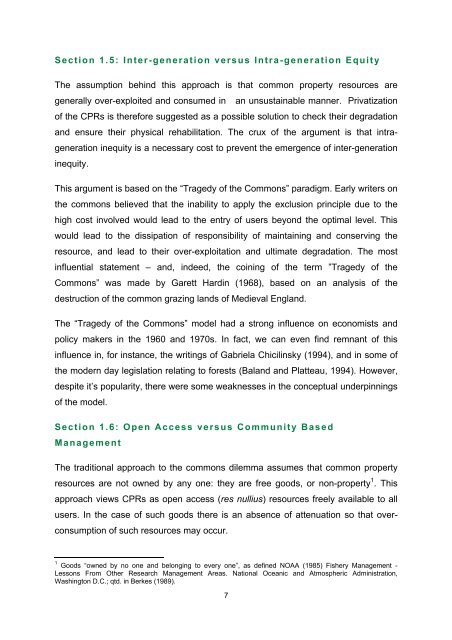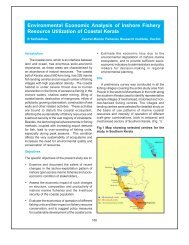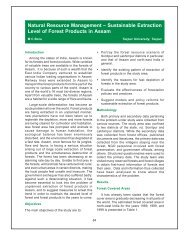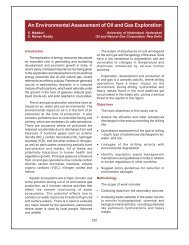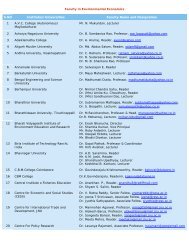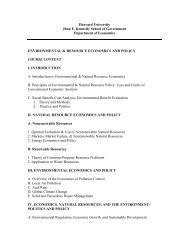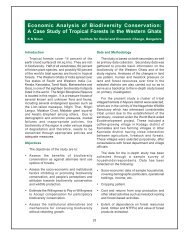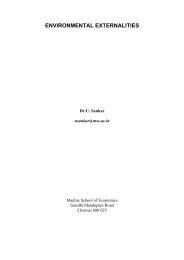PDF 3.08 MB
PDF 3.08 MB
PDF 3.08 MB
Create successful ePaper yourself
Turn your PDF publications into a flip-book with our unique Google optimized e-Paper software.
Section 1.5: Inter-generation versus Intra-generation Equity<br />
The assumption behind this approach is that common property resources are<br />
generally over-exploited and consumed in an unsustainable manner. Privatization<br />
of the CPRs is therefore suggested as a possible solution to check their degradation<br />
and ensure their physical rehabilitation. The crux of the argument is that intra-<br />
generation inequity is a necessary cost to prevent the emergence of inter-generation<br />
inequity.<br />
This argument is based on the “Tragedy of the Commons” paradigm. Early writers on<br />
the commons believed that the inability to apply the exclusion principle due to the<br />
high cost involved would lead to the entry of users beyond the optimal level. This<br />
would lead to the dissipation of responsibility of maintaining and conserving the<br />
resource, and lead to their over-exploitation and ultimate degradation. The most<br />
influential statement – and, indeed, the coining of the term ”Tragedy of the<br />
Commons” was made by Garett Hardin (1968), based on an analysis of the<br />
destruction of the common grazing lands of Medieval England.<br />
The “Tragedy of the Commons” model had a strong influence on economists and<br />
policy makers in the 1960 and 1970s. In fact, we can even find remnant of this<br />
influence in, for instance, the writings of Gabriela Chicilinsky (1994), and in some of<br />
the modern day legislation relating to forests (Baland and Platteau, 1994). However,<br />
despite it’s popularity, there were some weaknesses in the conceptual underpinnings<br />
of the model.<br />
Section 1.6: Open Access versus Community Based<br />
Management<br />
The traditional approach to the commons dilemma assumes that common property<br />
resources are not owned by any one: they are free goods, or non-property 1 . This<br />
approach views CPRs as open access (res nullius) resources freely available to all<br />
users. In the case of such goods there is an absence of attenuation so that over-<br />
consumption of such resources may occur.<br />
1 Goods “owned by no one and belonging to every one”, as defined NOAA (1985) Fishery Management -<br />
Lessons From Other Research Management Areas. National Oceanic and Atmospheric Administration,<br />
Washington D.C.; qtd. in Berkes (1989).<br />
7


